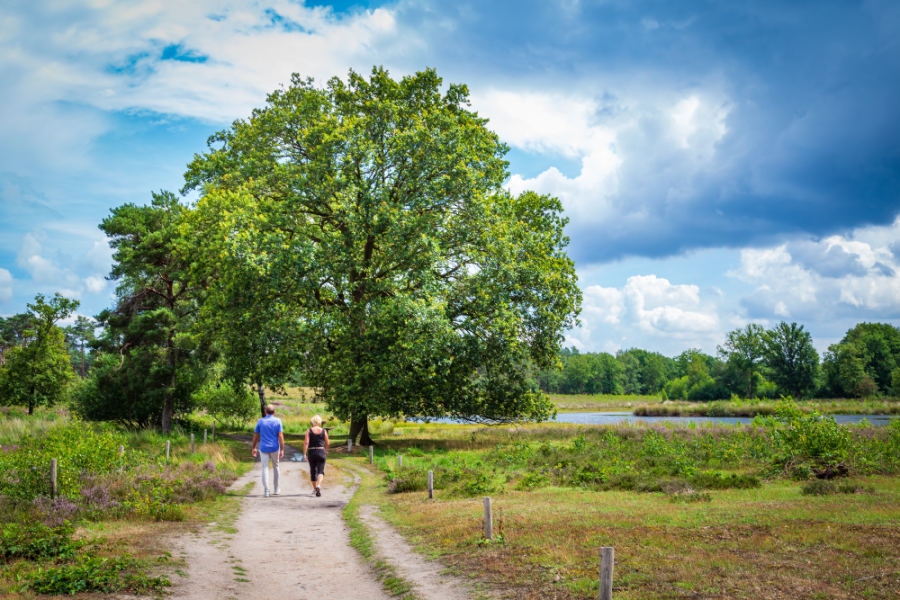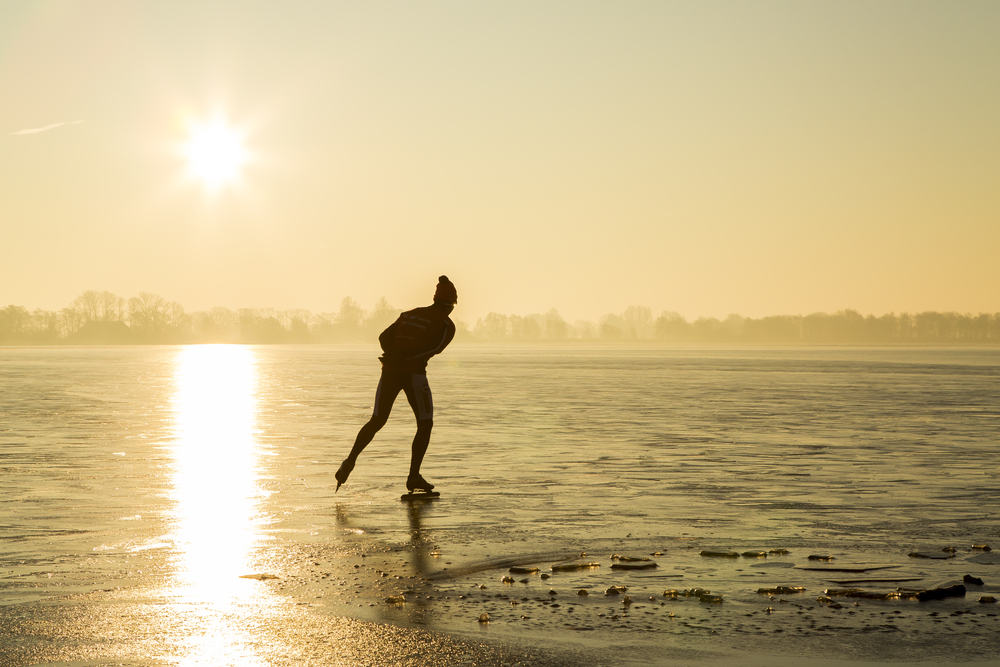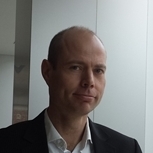Natural capital
Nature provides us with resources and food, regulates our climate and purifies air and water. Moreover, it provides us with a pleasant living and leisure environment. These properties are not included in the price of products. In collaboration with Statistics Netherlands (Centraal Bureau voor de Statistiek – CBS) Wageningen researchers worked on a United Nations ratified method of measuring nature’s contribution to the economy. This may stimulate sustainable resource management. Want to know the value of the forest near you?
From air purification to the pollination of plants, from a place to enjoy leisure time to a source of water, food, wood, iron ore and fuels. Nature is important to us. Still, we do not include the value of natural ecosystems in our economic data. To gain insight into nature’s contribution to the economy, the United Nations Statistics Committee commissioned the development of a measuring method. The Dutch contribution to developing this method was made by Lars Hein, professor of Ecosystem Services, and Statistics Netherlands (CBS).
“A better understanding of the contribution nature makes to our economic prosperity could create a broader base of support for nature conservation and more sustainable use of our natural resources.”
‘This method is not about measuring the value of nature itself, but the value of its contribution to the economy’, says Hein, addressing a common misconception. Calculating the value of nature is, after all, impossible. ‘Nature has intrinsic value, a worth of its own, which is independent of human use of perception. Our measuring method does not refer to things such as the presence of beavers in the Biesbosch or whales in the seas.’
Standard measuring methods to calculate non-renewable resources such as oil, gas, and ores have been in existence since 1993. Based on these methods, we are able to calculate the Dutch natural gas revenues. ‘However, when renewable resources are involved, such as wetlands and forests that contribute to purifying air and water, it becomes much more complicated. The timber from a forest may be sold for production purposes. But no-one pays for the value of all the services a living forest provides’, Hein says. Forests sequester carbon, filter the air, regulate water flow and provide tourism and leisure opportunities, to name just a few of the services a forest provides.
Thirteen nature services
The new international measuring standard called System of Environmental Economic Accounting —Ecosystem Accounting (SEEA EA), is known in the Netherlands as “natural capital calculations”. This is the framework of calculating methods that map the services nature provides. This is done both in physical units, such as cubic metres of harvested timber and in money, for example, in stumpage value (unharvested timber). ‘There are specific methods best suited for each type of service.’ Currently, only the physical part is standard. The economic measuring methods require further detailing.
Over one hundred environmental scientists and statisticians from over forty countries across the globe contributed to the measuring standard. The Wageningen scientists and CBS experts studied the different types and sizes of ecosystems in the Netherlands and their condition, services, and economic contribution. The data was recorded on approximately eighty high-resolution maps, providing information on the 49 most important ecosystem types in the Netherlands, their health, and their services.
Thirteen different ecosystem services are defined in the Netherlands, including the production of potable water, food and timber, leisure and nature tourism, air purification, regulating humidity and climate, filtering particulates and carbon sequestration. ‘We have identified only the ecosystem services on land. In a follow-up study, the CBS is to investigate what value the services of the North Sea have.’
The forest near you
But, how is this done? How can you estimate the economic contribution of, for example, the forest near you? Hein explains that he and his colleagues are working on an internet viewer, which is based on average ecosystem values. ‘If you zoom in to a province or municipality, you are fine, but the data become less accurate if you zoom in even further on specific plots. The viewer allows you to access simple statistics, showing how much CO2 is emitted by the peatlands, or how much CO2 is stored in a specific forest’, Hein states. The viewer is expected to be operational this summer, allowing everyone to see what services are provided by a specific forest or other ecosystems, including your neighbourhood nature area.

The system is not yet completed. ‘We are currently calculating many ecosystem services, but not all. Moreover, we focus on specific economic value, which is not the same as the total welfare value. For potable water, for example, we work with the country’s price. But, if potable water is scarce, its value is much higher than what we pay for a litre of tap water now.’
The value of biodiversity – the richness of animal and plant species – cannot be expressed in currency. ‘How are we to express the deterioration of the butterfly population in economic terms?’ Hein reiterates that this method expresses the economic contribution of nature and not the value of nature itself.
Underestimation
If the measuring method is thus limited, why is it still important to add a price tag to nature’s services? ‘Currently, there is no price tag, and ecosystem services are not included at all. We often underestimate the economic contribution of nature. Even with this limited measuring method, we can see that forests have great value. In some areas outside of the Randstad, nature provides an added economic value comparable to the value of housing lands.’
The method is yet to be proven, says Hein, but it demonstrates how dependent countries are on the natural resources for their economic prosperity. This realisation could prompt countries to take better care of the natural ecosystems and stop depleting their natural capital. ‘The measuring method is linked to the international system of “national accounts” used by nations to measure the state of their national economy. It will soon be possible to compare the contribution of ecosystems to the economy with macro-economic data such as the Gross National Product.’ China already works with a gross ecological product. ‘Although it is based on rough and limited models, it does highlight the effects economic policy has on nature and the environment.’

Hopefully, an increasing number of tropical countries will embrace the international measuring standard. This will facilitate calculating the ecosystem impact of importing soya from Brazil or palm oil from Indonesia. The production of these commodities causes deforestation, while the economic contribution of tropical forests’ ecosystem services is much higher than that of soya fields or oil palm plantations.
Making a difference
In addition to the UN, the EU, OECD, IMF and the World Bank have accepted this standard for natural capital accounts. However, this does not mean it will be widely applied immediately. ‘It takes time for people to become accustomed to a new information set and start actively using it. The data for the Netherlands for 2013, 2015 and 2018 are now available.’ Over the past years, the work on the measuring method was funded by the Ministries of Agriculture, Nature and Food Quality, Infrastructure and Water Management and Foreign Affairs.
Hein and his colleagues hope the natural capital accounts will be further developed and improved in the future. The measuring method may make a difference in how we approach nature, the professor thinks. ‘Our ecosystems are not doing well. A better understanding of the contribution nature makes to our economic prosperity could create a broader base of support for nature conservation and more sustainable use of our natural resources.’
Read more:
- The natural capital account of the Netherlands
- The Netherlands’ biodiversity account
- Project Ecosystem Accounting
- On the System of Environmental Economic Accounting (SEEA)
- Natural capital accounts in Europe, with webinars on SEEA EA (English)
- Read this article in Dutch


Dear Professor,
Hope you are doing fine.
My name is Agron Haxhimali, Executive Director of Association of Albanian Municipalities.
I’m interested to prepare a methodology for identifying, mapping, and catalogue of Municipal capital natural,
Searching here in google i find You and thought to ask you help me, recommending or guiding about publication, information, et, on this topics.
thank you very much.